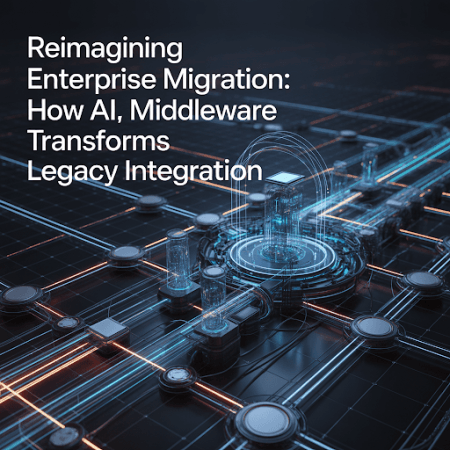
In today's fast-paced technological landscape, Legacy systems, though dependable, often act as roadblocks to modernization. Traditionally, migrating these systems to the cloud involves high costs, prolonged timelines, and significant disruption. Enter the innovative "Zero-Touch AI-Driven Integration" framework, developed by Narendra Chennupati, which proposes a hands-free, autonomous approach to migration. With just two lines to introduce him, He is a forward-thinking researcher in enterprise systems transformation focusing on artificial intelligence and automation. His work reflects a deep understanding of the systemic inefficiencies plaguing traditional migration methods.
Rethinking System Migration from the Ground Up
Often monolithic and poorly documented, legacy systems hinder integration with modern, cloud-native tech. The Zero-Touch concept leverages AI to autonomously analyze, optimize, and migrate these systems into agile, modular infrastructures, eliminating manual intervention and seamless modernization.
The Core of Zero-Touch: An Intelligent Middleware Stack
The proposed AI middleware architecture comprises five layers: perception, intelligence, orchestration, execution, and governance. These layers work in tandem to observe system behavior, make informed decisions, and manage migration tasks in real time. The perception layer collects data through non-intrusive monitoring, while the intelligence layer interprets this data using advanced machine learning. The orchestration and execution layers then carry out the migration, all under the strict oversight of a governance layer that ensures compliance and performance benchmarks.
A Fusion of Technologies at Work
This framework stands out by integrating AI techniques NLP extracts insights from documents and code, machine learning uncovers patterns, knowledge graphs map system relationships, and computer vision interprets GUIs. These techniques enable scalable understanding and transformation of complex, outdated legacy environments without full code access.
More Intelligent Mapping for Seamless Transformation
Legacy workflows often diverge from documentation. Middleware uses dynamic process mining and semantic analysis to identify and align operations with cloud-native equivalents. Graph-based transformations and optimization algorithms restructure workflows into efficient microservices, improving scalability, latency, and cost over manual migration.
From Code Conversion to API Modernization
The AI-driven middleware also features intelligent code transformation tools. These can rewrite outdated codebases into modern languages while preserving critical business logic. Simultaneously, containerization tools prepare applications for cloud deployment. The system generates new APIs, ensuring seamless integration with contemporary digital ecosystems. This automation accelerates the migration timeline and significantly reduces the need for human intervention.
Continuous Validation Ensures Reliability
Continuous validation mechanisms are built into the system to maintain integrity throughout the migration. Automated tests, generated from legacy system behaviors, assess functionality at every step. Performance benchmarks and security scans run parallel to ensure that each migrated component performs at or above its original standard. This proactive approach reduces risk and provides real-time feedback, allowing for rapid course correction.
Progressive Migration Reduces Risk
This framework supports a progressive cutover strategy instead of the traditional high-risk "big bang" deployment. Features are migrated in phases using techniques like canary releases, traffic shadowing, and blue-green deployments. Bidirectional data synchronization ensures that the old and new systems remain in sync during the transition, enabling a safer and more controlled migration with minimal business disruption.
The Road Ahead for Zero-Touch Transformation
Despite its potential, AI faces challenges like legacy systems, hardware limits, and unpredictability. Explainable AI and collaborative tools may help, while integration with quantum computing, edge processing, and federated learning could further expand its future capabilities.
In conclusion, Narendra Chennupati's visionary approach to legacy system migration significantly advances enterprise IT. The Zero-Touch AI-Driven Integration framework not only addresses the technical and operational challenges of digital transformation but also reimagines the role of automation in modern organizations. As industries seek greater agility and efficiency, this innovation offers a smarter, faster, and more adaptable path forward—one well-suited to the evolving demands of today's digital era.









